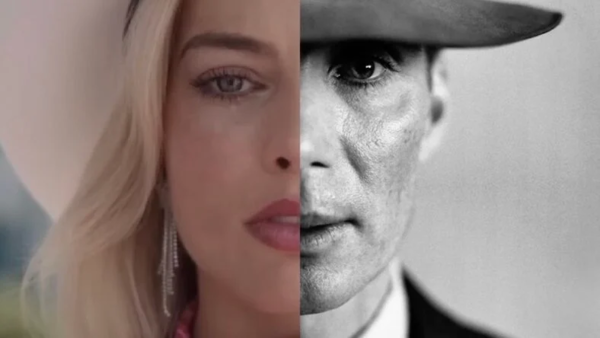Released on the same day in July, the long-awaited Barbie and Oppenheimer have already grossed over 2 billion USD at the global box office. The worldwide success can be attributed to “Barbenheimer’s” massive following on the Internet and mass media. A stark distinction between the two movies’ visuals and central ideas led to millions of people expressing their interest in watching both films, contributing to the ever-growing hype around them.

While Oppenheimer tells a story about the inventor of a nuclear bomb and lays the ground for contemplations on issues such as the impact technological and scientific progress has on human lives, Barbie certainly seems to be a much more laid-back, fun type of movie to watch. With its visually appealing characters, “pink” setting, and a more relaxed PG rating, Barbie played well on its brand recognition, as the iconic Barbie doll has been finding its place in the hearts of millions of girls around the world since the early 1960s. Nevertheless, the movie turned out to be nothing less than a deep, critical, and objective work on current social issues, such as self-image, patriarchy, and gender-specific insecurities. By offering a surprisingly deep analysis, Barbie put itself on the same level as Oppenheimer in terms of the depth of the message it delivers.
The main character Barbie resides in Barbieland, a symbolic representation of the social media iceberg, where there is no place for struggle and every day is perfect. Serving as one of the many references to problems with the real world, this setting outlines the pressure for women, and society in general, to try their best to play to the seemingly unattainable standards of beauty and success. Barbie’s perfect life comes to an end when her character becomes more humanized. She suddenly starts having problems with her hair, finds excess fat on her body, and most importantly, starts thinking about death. Such a chain of “bad days” brings her to Weird Barbie, an encounter with whom initiates a pivotal discovery — it turns out that when someone who spends their time playing with Barbie in the real world is in trouble, the problems enter Barbieland. It therefore becomes Barbie’s mission to travel to the real world with her friend Ken and bring Barbieland back to its flashy, spotless state. It is at this point when the central theme of the film is introduced — the comparison of Barbie’s world with the real world. As Barbie sets foot into the real world, she is struck with an image that is far from what she anticipated. She becomes a victim of objectification, as opposed to being a pioneer of purpose and creative thought. Such discovery serves as a direct critique of the doll’s legacy and sheds light on how Barbie’s image contributed to promoting toxic stereotypes.
Barbie’s companion Ken, on the other hand, serves as a portrayal of complexities inherent in the modern view of masculinity. His constant chase for Barbie’s attention lays down the insecurities stemming from societal expectations that men are facing — mainly the idea that a man’s value is dependent on his success with women. When they both kick off their journey, Ken’s contrasting experience adds more intricacies to the voyage across the real world. While Barbie is struggling to find her way around the harsh realities of misogyny and objectification, Ken dives deep into the power dynamics of a patriarchal society. The evident difference between the real-world experience of the two characters brings Barbie closer to understanding the importance of challenging her own legacy, while Ken’s attempts to introduce patriarchy to Barbieland serve as a critique of the embracement of orthodox yet questionable ideologies. While the film does not promote the idea of getting rid of masculinity completely, the audience is encouraged to think of the cooperation of both genders as the most effective way to embrace equality and nurture unique strengths.
During her trip to the real world, Barbie finds herself surrounded by social constructs that affect women nowadays, such as the absence of female authority, pressure to stick to societal expectations and certain images, and omnipresent patriarchal tendencies. Barbie’s journey is more of a journey of self-exploration rather than a journey to another land. It serves as a reminder that women of the world form a dynamic, ever-growing body that is subject to self-examination and subjective judgment. Despite Barbie’s appearance, the film introduces a new look at her — the look at the depth and peculiarity of Barbie’s persona, which serves as an effective attempt to redefine the way the doll is perceived for the generations to come.

